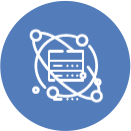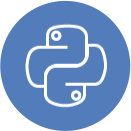Our Alumni Work At

"AI to contribute $16.1 trillion to the global economy by 2030. With 133 million more engaging, less repetitive jobs AI to change the workforce." - (Source). Data Science with Artificial Intelligence (AI) is a revolution in the business industry.. AI is potentially being adopted in automating many jobs leading to higher productivity, less cost, and extensible solutions. It is reported by PWC in a publication that about 50% of human jobs will be taken away by the AI in the next 5 years.
There is already a huge demand for AI specialists and this demand will be exponentially growing in the future. In the past few years, careers in AI have boosted concerning the demands of industries that are digitally transformed. The report of 2018 states that the requirements for AI skills have drastically doubled in the last three years, with job openings in the domain up to 119%.
FAQs
Surat has very thriving textile, diamond, and manufacturing industries that have begun to focus on using Data Analytics for effective operational optimization, efficiency improvement, and growth, thus creating significant job scopes for analysts in Data Analytics.
Many of our Data Analytics classes in Surat are offered on flexible schedules, including weekend and evening classes, so students can work part-time or participate in an internship while studying.
In recent years, as an ever-growing IT hub, Surat is adopting more digital technologies. Hence, greater dependence on data-driven decisions is augmenting the demand for qualified Data Analysts, making it the fastest-emerging education hub.
Yes. Most of our courses in Surat are collaborating with international organizations to issue the certifications, increasing job placements since they are recognized nationally and internationally.
Of course, there are many courses like ours in Surat that offer courses starting from the basic concepts of mathematics and statistics and programming to cater to the non-technical students opting for Data Analytics.
The most obvious benefit of pursuing a this course is that one can apply to a plethora of job opportunities available in the data science market. The demand for data science professionals in India it has increased by 400% and the supply has increased by 19% only. This is the most sought after qualification. It is also the most lucrative career option with salaries hitting the ceiling.
Another benefit would be the range of analytical and problem-solving skills that a student acquires from a data analytics training. These skills can be used to analyse big data and draw meaningful insights from the same.
The third benefit is that you exhibit better business decision-making skills in the workplace.
Professionals have master's or even Ph.D. in computer science, statistics, or engineering and industry certifications and applicable experience in Data Analytics tools and techniques.
Yes, our courses at Surat provide online and hybrid models for their Data Analytics courses; students may learn anywhere with high standards of education.
Data Analytics Programs in Surat are very practical where programs go straight into real-world projects, data sets, and case studies to involve the student with hands-on experience in solving industry challenges.
Yes, our major programs available in Surat offer preparation for certification from leading industry companies such as Microsoft, IBM, and Google, thus enhancing the employability of students upon the completion of the course.
The faculty-to-student ratio is rather low, thus one gains individualized attention and contact from instructors. It also adds up to better learning and acquaintance with the subject.
Yes. Most of our courses at Surat include machine learning as a core part of the curriculum with theories on algorithms, model training, and real-world applications in predictive analytics and AI.
Of course, Data Analytics courses in Surat very frequently incorporate cloud platforms including AWS, Azure, or Google Cloud, thus teaching the students to create, analyze, and visualize data on a cloud computing tool.
Our curriculum is focused on real industry needs and especially emphasizes sectors like textiles, e-commerce, and manufacturing where Data Analytics is used for operation optimization and decision-making.
Yes, the Data Analytics programs under Surat include hands-on exposure through advanced data visualization tools like Tableau, Power BI, and Python libraries, in order to enable the presentation of insights.
Once a student completes his course and receives the Course Completion Certificate, he is eligible for an internship. We offer an internship with AiSPRY. The students gets involved in a live project with AiSPRY. At the end of his internship, he will receive an Internship Certificate in recognition of his efforts.
A fresh graduate will greatly benefit from the internship opportunity with AiSPRY that our institute offers. He will work on a live project and get hands-on experience of implementing a data analytics solution. This will improve his employability immensely. Most employers value live project experience only.
You can apply for the following jobs after completing the course:
- Data Analyst
- Data Scientist
- Data Engineer
- Data Architect
- Business Analyst
A Data Analyst deals with Data Cleansing, Exploratory Data Analysis and Data Visualisation, among other functions. The analyst's job is to sift through historical data to understand the present state of the business.
A Data Scientist builds algorithms to solve business problems using statistical tools such as Python, R, SAS, STATA, Matlab, Minitab, KNIME, Weka etc. He also performs predictive modelling to facilitate proactive decision-making. Machine learning algorithms are used to build predictive models using Regression Analysis and a Data Scientist must develop expertise in Neural Networks and Feature Engineering.
A Data Engineer is essentially a programmer in Spark, Python and R and complements the role of a data scientist.
A Data Architect is entrusted with the task of establishing hardware and software infrastructure needed to perform Data Analysis. They have to select Hard Disk, Network Architecture, Databases, GPUs etc.
The main industries in Surat are textiles, diamond processing, logistics, retail, and e-commerce. They have long started using Data Analytics for operational excellence and customer insight.
A fresh Data Analyst in Surat fetches an average salary of Rs 3.5-6 lakh in their entry-level positions and can go much higher over time with experience and expertise.

Field of Data Analyst Jobs in Surat
As a rapidly growing business hub, there are promising prospects for Data Analytics courses in Surat. Their thriving industries, the growing need for decision-making through data, and the competitive job market make it an ideal training destination.

Salaries for Data Analyst in Surat
In Surat, Data Analysts can expect an average salary ranging from INR 4 to 8 lakhs annually, depending on experience and expertise, with higher earnings in specialized or senior roles.

Projects for Data Analytics in Surat
The Data Analytics teams in Surat work on projects across textiles, manufacturing, logistics, e-commerce, and retail sectors in supply chain optimization, customer insights, sales forecasting, market trends, and operational efficiencies.

Role Of Open Source Tools In Analytics
Open-source tools are cost-effective, flexible solutions in data analysis that can be customized and collaborated over using a large number of pre-built algorithms thereby encouraging innovation and quicker problem-solving in analytical tasks.

Modes of Training for Data Analytics
Data Analytics training can be delivered through various modes, including online courses, in-person workshops, bootcamps, self-paced learning, corporate training, and university programs, offering flexibility to suit different learning preferences.

Industry Applications of Data Analytics
Data Analytics drives innovation within industries such as predictive machinery maintenance, dynamic pricing in retail, fraud detection in finance, supply chain optimization and in personalized healthcare treatments, enhancing efficiency and decision-making.
Talk to your program advisors today!
Get your profile reviewed

